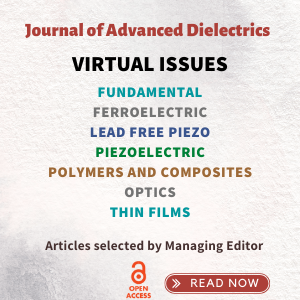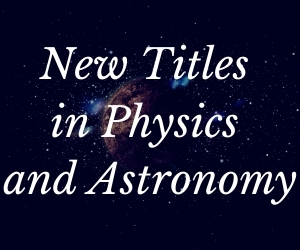System Upgrade on Tue, May 28th, 2024 at 2am (EDT)
Existing users will be able to log into the site and access content. However, E-commerce and registration of new users may not be available for up to 12 hours.For online purchase, please visit us again. Contact us at customercare@wspc.com for any enquiries.
This book introduces the physics and technology of the High-Luminosity Large Hadron Collider (LHC), highlighting the most recent modifications that shaped the final configuration, which is now in the advanced stages of its construction.
This new High-Luminosity configuration of the LHC is the major accelerator project of this decade and will give new life to the LHC after its first fifteen years of operation, allowing for more precise measurements of the Higgs Boson and extending the mass limit reach for new particles.
The LHC is such a highly optimized machine that upgrading it requires breakthroughs in many areas. Unsurprisingly, the High-Luminosity LHC required a long R&D period to bring into life an innovative accelerator magnet, based on Nb3Sn and capable of generating fields in the 11–12 T range, as well as many other new accelerator technologies such as superconducting compact RF crab cavities, advanced collimation concepts, a novel powering technology based on high temperature superconducting links, and others.
The book is a self-consistent series of papers, which addresses all technology and design issues. Each paper can be read separately as well. The first few papers provide a summary of the whole project, the physics motivation, and the accelerator challenges. Altogether, this book brings the reader to the heart of the technologies that will also be key for the next generation of hadron colliders.
This book is an essential reference for physicists and engineers in the field of hadron colliders and LHC related issues and can also be read by postgraduate students.
Contents:
- The High Luminosity Large Hadron Collider — HL-LHC (O Brüning and L Rossi)
- The Physics Landscape of the High Luminosity LHC (M Mangano)
- Upgrade of the Experimental Detectors for High Luminosity LHC (F Hartmann, B Hippolyte, F Lanni, T Nayak, C Parkes and P Rumerio)
- Operational Experience from LHC Run 1 & 2 and Consolidation in View of Run 3 and the HL-LHC (M Lamont)
- Machine Physics and Performance (G Arduini, R De Maria, M Giovannozzi, G Iadarola, E Métral, Y Papaphilippou and R Tomás)
- Superconducting Magnet Technology for the IR Upgrade (E Todesco, G Ambrosio, P Ferracin, G L Sabbi, T Nakamoto, M Sugano, R Van Weelderen, P Fabbricatore, S Farinon, F Toral, M Sorbi, M Statera, Q Xu, J M Rifflet and H Felice)
- RF Systems (R Calaga, P Baudrenghien, G Burt, O Capatina, E Jensen, E Montesinos and A Ratti)
- Collimation of HL-LHC Beams (S Redaelli, A Bertarelli, R Bruce, F Carra, A Lechner, A Mereghetti and A Rossi)
- Circuit Layout, Powering and Protection (F Rodríguez Mateos, T D Catalão Da Rosa, F Menéndez Cámara, S Yammine and M Zerlauth)
- Cold Powering of the Superconducting Circuits (A Ballarino and P Cruikshank)
- Warm Powering (M Martino, J-P Burnet and S Yammine)
- Machine Protection in the High Luminosity LHC (A Apollonio, P Bélanger, D Carrillo, R Denz, F Rodriguez Mateos, B Panev, A Siemko, J Uythoven, A Verweij, D Wollmann and M Zerlauth)
- Interface with Experimental Detector in the High Luminosity Run (H Burkhardt and F Sánchez Galán)
- Cryogenics for the HL-LHC (S Claudet, G Ferlin, E Monneret, A Perin, M Sisti, R Van Weelderen, A Lees, V Gahier, K Brodzinski and L Delprat)
- Energy Deposition and Radiation to Electronics (F Cerutti, R Garcia Alia and A Tsinganis)
- 11T Dipole and New Connection Cryostats for Collimators (B Bordini, L Bottura, A Devred, L Fiscarelli, M Karppinen, G de Rijk, L Rossi, F Savary, D Schörling and G Willering)
- Vacuum System (V Baglin, P Chiggiato and C Garion)
- Beam Instrumentation and Diagnostics (E Bravin, R Jones, T Lefevre and R Veness)
- Injection and Beam Dump Systems (C Bracco, M J Barnes, W Bartmann, M Calviani, D Carbajo Perez, E Carlier, L Ducimetiere, M I Frankl, B Goddard, J Jowett, A Lechner, N Magnin, A Perillo Marcone, T Polzin, V Rizzoglio, V Senaj, L Vega, V Vlachodimitropoulos and C Wiesner)
- Controls Technologies (J Serrano, G Daniluk, E Gousiou and C Roderick)
- Beam from Injectors: The LHC Injectors Upgrade (LIU) Project (M Meddahi, G Rumolo, R Alemany, H Bartosik, G Bellodi, J Coupard, H Damerau, G P Di Giovanni, A Funken, R Garoby, S Gilardoni, B Goddard, K Hanke, A Huschauer, V Kain, A Lombardi, D Manglunki, B Mikulec, F Pedrosa, S Prodon, R Scrivens and E Shaposhnikova)
- Integration, (De-)Installation and Alignment (P Fessia and H Mainaud Durand)
- The HL-LHC Technical Infrastructure (L Tavian)
- HL-LHC IT String and Hardware Commissioning (M Bajko and M Pojer)
- SRF Cryogenic Test Facility for the HL-LHC (L Tavian, G Vandoni and W Venturini Delsolaro)
- The International Network of Test Infrastructures for the HL-LHC Magnets and Cold Powering System (M Bajko)
- Beam-beam Long Range Compensation: From Concept to Validation (Y Papaphilippou and G Sterbini)
- Non-Linear Optics Measurements and Corrections (E H Maclean, F Carlier, J W Dilly, M Giovannozzi, N Karastathis, T H B Persson and R Tomás)
- The Role of Noise on Beam Stability and Performance in HL-LHC (X Buffat, S V Furuseth, E Métral, T Pieloni, C Tambasco and D Valuch)
- Crystal Collimation of Heavy-Ion Beams (S Redaelli, R Bruce, M D'Andrea, D Mirarchi and R Rossi)
- High Field Accelerator Magnets for Next Generation Colliders — Motivation, Goals, Challenges and R&D Drivers (L Bottura)
Readership: Anyone interested in High Energy Physics, Accelerators Physics and Technology, High field magnets, Superconducting power lines, Vacuum techniques.



 OPEN ACCESS
OPEN ACCESS

